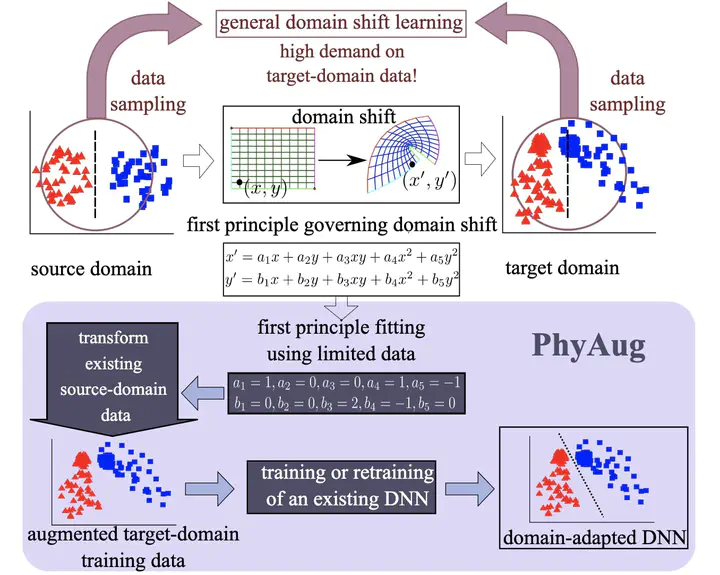PhyAug: Physics-directed data augmentation for deep sensing model transfer in cyber-physical systems
 PhyAug Overview
PhyAug OverviewAbstract
Run-time domain shifts from training-phase domains are common in sensing systems designed with deep learning. The shifts can be caused by sensor characteristic variations and/or discrepancies between the design-phase model and the actual model of the sensed physical process. To address these issues, existing transfer learning techniques require substantial target-domain data and thus incur high post-deployment overhead. This paper proposes to exploit the first principle governing the domain shift to reduce the demand on target-domain data. Specifically, our proposed approach called PhyAug uses the first principle fitted with few labeled or unlabeled source/target-domain data pairs to transform the existing source-domain training data into augmented data for updating the deep neural networks. In two case studies of keyword spotting and DeepSpeech2-based automatic speech recognition, with 5-second unlabeled data collected from the target microphones, PhyAug recovers the recognition accuracy losses due to microphone characteristic variations by 37% to 72%. In a case study of seismic source localization with TDoA fngerprints, by exploiting the frst principle of signal propagation in uneven media, PhyAug only requires 3% to 8% of labeled TDoA measurements required by the vanilla fingerprinting approach in achieving the same localization accuracy.